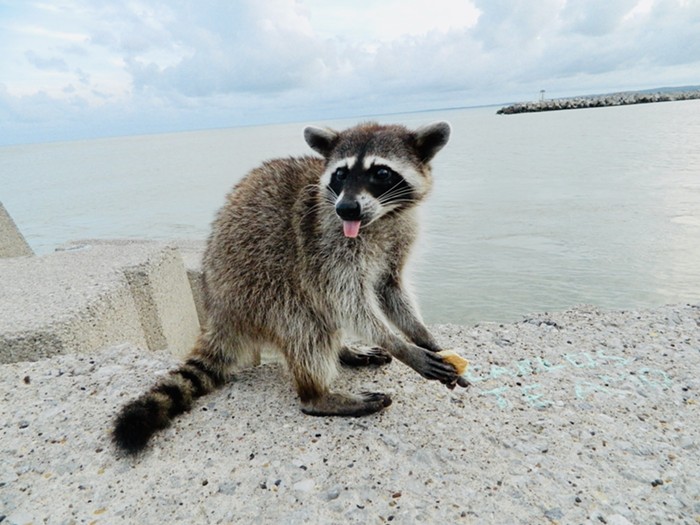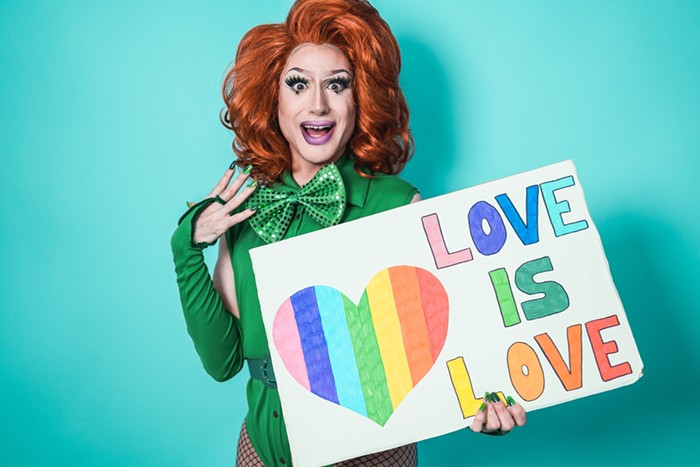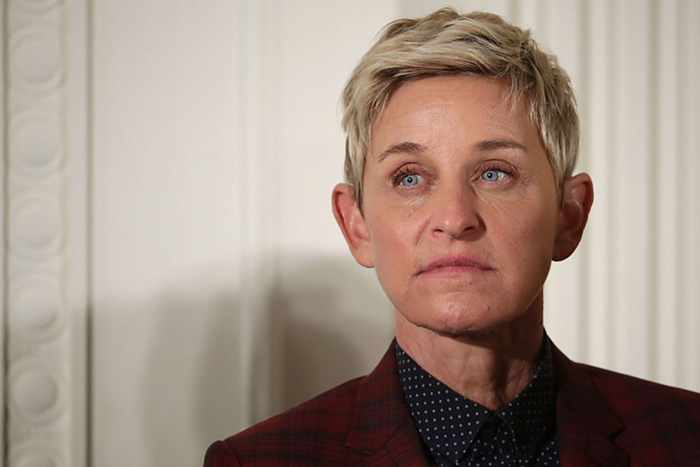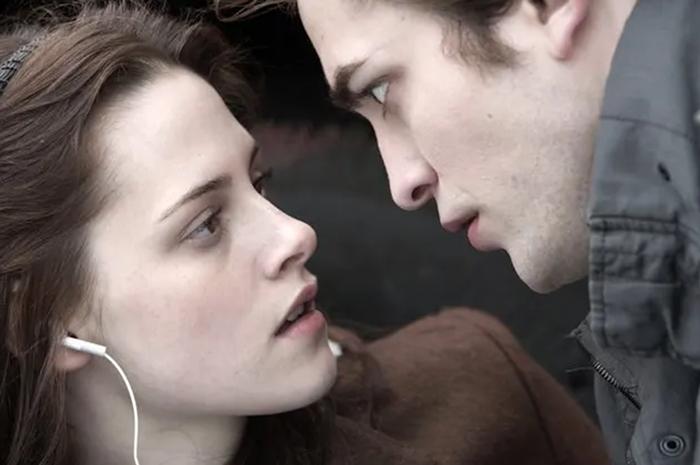John Hodgman declares that sadness, anger, and frustration are what really pleases the average Bostonian. Alison Bechdel tells a story about moving to Vermont for a woman, but staying for the foliage. Susan Orlean confesses that she doesn't really relate to her home state of Ohio, while Anthony Bourdain admits that he's lied about being from New Jersey.
The third film in Powell's Books' "Out of the Book" series, designed as part of an effort to find new ways of promoting books, is premiering this week, and features these authors and 15 more in frank, witty conversations about the states they're from and the states they love.
The film showcases the sweeping new essay collection State by State, conceived and edited by McSweeney's Editor-at-Large Sean Wilsey and Paris Review Deputy Editor Matt Weiland, which features 50 authors writing about the 50 states. The project is based on a series of state guides written in the 1930s under the New Deal-funded Federal Writers' Project, which provided gainful employment for Depression-era writers by commissioning them to write state guidebooks. Authors like Saul Bellow, Ralph Ellison, Zora Neale Hurston, Studs Terkel, and Richard Wright all contributed to the original guides, which took the motto: "To Describe America to Americans."
Picking up that mantle 70 years later, Wilsey and Weiland don't aim to create a comprehensive guide to the country. Some of the pieces are fact based while others verge into memoir territory, and while some of the authors write about their home states, others don't.
"You wouldn't want a book of 50 essays by people who are just from that state," Wilsey told me. "I think one of the best pieces in the book is the Delaware piece, because honestly we just couldn't find anybody who knew anything about Delaware. The guy who wrote the piece is an oral historian, and he interviews all these people, and he found that even though Delaware is the size of a fingernail, there's this huge difference between people in the North and the South. There's no way [one writer] can capture a whole state, but I think it's totally valid to go to a new state with a reporter's eye and capture something valid."
Lydia Millet, author of How the Dead Dream, was born in Boston and raised in Toronto, but chose to write about the small town in Arizona where she now lives, describing a place that is surrounded by extremes of both national beauty and small town small-mindedness, evoking an almost apocalyptic vision of the country as a whole.
"I think all of America is both metaphor and protagonist in the apocalypse story," Millet explains. "Arizona is just one example of many. I feel more passionate about Arizona than any other place I've lived, which is why I chose to settle down here. [It's] gorgeous and sublime, but also redneck and frightening. It's extreme, and that compels me."
What emerges from this assortment of writers both expected and surprising—Ha Jin writing about Georgia, Anthony Bourdain on New Jersey, Jhumpa Lahiri on Rhode Island—is a collection of writing that's difficult to summarize but easy to read. In an election year, when states are daubed red or blue and lines are increasingly drawn between cities and rural communities, this project returns a little character to the country, an effort to move past Us vs. Them-ism and to personalize a country that's so big and so vast it's hard to get your head around sometimes.
"It's easy to dismiss states as red or blue, conservative or progressive," local musician/writer Carrie Brownstein tells me. "But the truth is that those ideas and values live side by side. Whether we try to arrange ourselves to live near like-minded people or not, the states we inhabit are vast and varied. Like many people, I find it easiest to think of America as a whole when I leave the country and am confronted with an outsider's opinion of who we are. Suddenly, I realize that all of the ways I delineate myself from other Americans—politically, geographically, socially, etc.—are somewhat irrelevant when I leave our borders. In fact, just the idea that one could forget or reject the concept of 'American' seems very American to me. Maybe that solipsism is what people on the outside see in us."
Brownstein writes about the state of Washington for the collection, a piece that's steeped in the damp and barely contained wilderness of the Pacific Northwest. Equally moist is local graphic novelist Joe Sacco's illustrated ode to Oregon. Within Sacco's rain-streaked panels is a virtual compendium of clichés about Portlanders, from an umbrella aversion to our devotion to our dogs to a tendency to forget about the rest of the state—and, of course, the rain itself. I asked Sacco via email why he chose to focus on an Oregon cliché like the weather.
"My original idea was to do a piece about migrant workers and the wine industry," Sacco responded, "but panic set in when I realized how much work that would entail and how little time I had. Then, searching for new ideas, I realized I was the last writer/artist in Oregon who should have been tapped for this assignment. My beat is overseas, generally. I've lived here many years but, pathetically, I don't know the first thing about Oregon. So I fashioned a story of using myself as a foil to people who are authentically Ore-gonian. And they are authentically Oregonian partly because they roll with and are even shaped by the weather. Yes, the rain motif is a cliché. But as you know, it dominates life here and drives people into cafés and bars and bookstores. Rain is the state bird."
Our state bird is actually the Western Meadowlark, according to the information sheet that precedes Sacco's piece. There are approximately 3.6 million people living here (86.6 percent of us are white), our state song is "Oregon, My Oregon," and our state motto is the elegant Alis Volat Propriis—"She flies with her own wings." But in addition to fun facts about our state, State by State has some local interest thanks to the Powell's-produced film, playing at the Bagdad Theater on Monday, September 22.
"The original plan was to do a short film of about four minutes," says Powell's marketing director, Dave Weich, who produced the film. "Because we thought, well, that's what we can afford. But the more that we thought about it, the more we realized we should give it a full [half-hour long] treatment. It's such a good collection of authors, and such good timing with the election. It has relevance no matter where you live in the country, no matter what kind of writing you like. Everyone talks about how homogenous the US is becoming, with Best Buys and Starbucks and everything. It's certainly true, but people really are shaped by where they're from. Wyoming is not Maine."
The film features 19 authors reading excerpts from their pieces, as well as brief interviews conducted by Weich. The authors read to an audience composed of family, friends, and other authors, and part of the fun of watching the film is the chance to see how authors perform for one another, as well as how authors behave at a reading when they're not the ones onstage.
"When have you seen a bunch of really, really talented authors in a room just being themselves? Some of them are great listeners, some get antsy... They're all just people," Weich says. "And we really wanted to show that. You so rarely get to see authors just being themselves, and almost without exception they're more interesting than when they're being their public selves. Some of the authors knew each other, and some didn't, and they're all familiar with each others' work, and it was amazing to bring them together."















